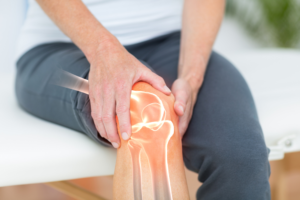Hormones and Hair Loss: A Womanly Malady
You may not have thought it, due to the generally male-oriented advertisement on the subject, but upwards of around 2 out of 3 women will experience some hair loss. Given its sensitive nature, writing about hormonal causes of baldness in women is something I do only reluctantly, as society is especially (and unrealistically) demanding of the physical appearance of women. Nevertheless, as a fellow sufferer of premature baldness, I am at least aware of some of the emotional distress that can come from something like this.
We must begin with asking how and why hormonal change causes hair loss?
It may surprise you to learn that it is testosterone and its harmful by-product, dihydrotestosterone (DHT), which stands at the root of hormonal hair loss. Testosterone, which exists in both men and women, converts to DHT with the use of the enzyme Type II Five-alpha reductase, existing in the hair follicles. The DHT reacts with the follicles and renders healthy hair unable or unlikely to survive.
Hormones are healthiest when in a delicate balance, so testosterone levels do not have to rise for there to be a problem. Instead, a lowering of hormones in women gives an edge to the levels of DHT (this is opposed to the causes of baldness in men, which usually requires a rise in hormone levels).
Therefore, the most frequent instances of female hair loss occur upon the onset of menopause, due to the inherent lowering of hormones and thyroid function. It would be wrong, however, to think that hair loss in necessarily linked with age, as hormonal change can occur due to heredity, pregnancy or even stress.
How can this be treated?
Hair loss is, unfortunately, difficult to treat. Permanent hormonal change due to age or heredity is hard to correct with medications. Nonetheless, the effects of hair loss may be treated with Minoxidil, a lotion that is rubbed into the scalp. Not only is it a bit of a mystery as to how exactly it works, its effectiveness is also debatable. Statistics show that around half of its users only halt further hair-loss, with around 1 in 7 showing signs of hair regrowth, and continued hair loss in at least 1 in 3. It’s biggest drawback, however, is two-fold: that it takes a long time to take effect (around 4 months) and needs to be used indefinitely; and the inherent rolling costs of this medication is significant.
So, where does this leave us? Although this medicinal treatment may be attractive to some, it is far from perfect, with considerable weaknesses. Is there an alternative?
An advanced non-surgical hair system, also known as a wig- though, the word and its connotations do not do it justice- can provide robust, practical, versatile, cost-effective, and realistic hair cover for those of us who suffer from thinning hair.




